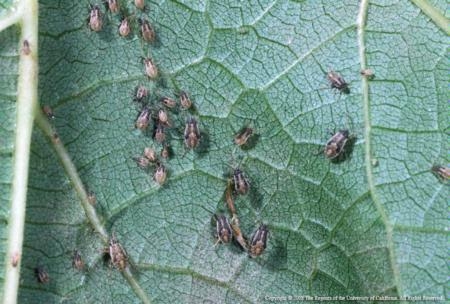- Author: Chris M. Webb
In the nymph stage, false chinch bugs (Nysius raphanusare) are so small they look like individual coffee grounds. Both the nymphs and the adults feed by drinking plant fluids through their proboscis, a hypodermic-needlelike structure they use to probe into plant tissue. This type of feeding can cause severe damage to plants.
Problems with false chinch bugs are often more serious in years with wet, cool springs. These insects are commonly found within grassy or weedy fields, pastures, and foothills. Cool, wet springs keep these grasses and weeds alive longer which can cause false chinch bug populations to explode. As the plants in these areas dry up, false chinch bugs move on to irrigated fields and landscapes to survive. The adults are tiny – about 1/8 to 1/6 long, but they are good fliers and can travel significant distances.
Most years these insects are only a pest of seedlings. However, wet years can be a different story. These bugs tend to aggregate in large groups on plants or on walls. On occasion these bugs even enter into homes.
Home owners and landscape professionals can learn more about the false chinch bug, including how to manage them, by viewing UC IPM’s False Chinch Bug Pest Note.
Commercial growers can find information at UC IPM’s Pest Management Site.





